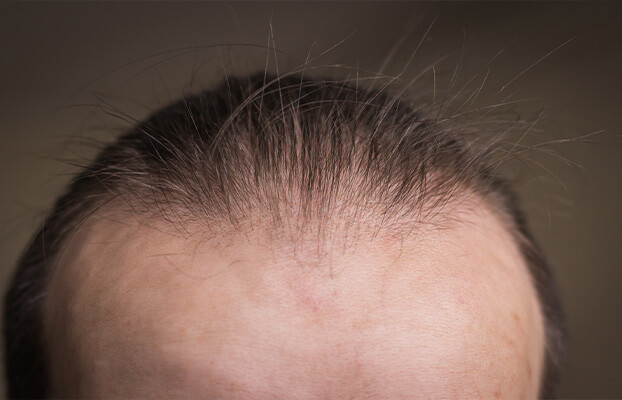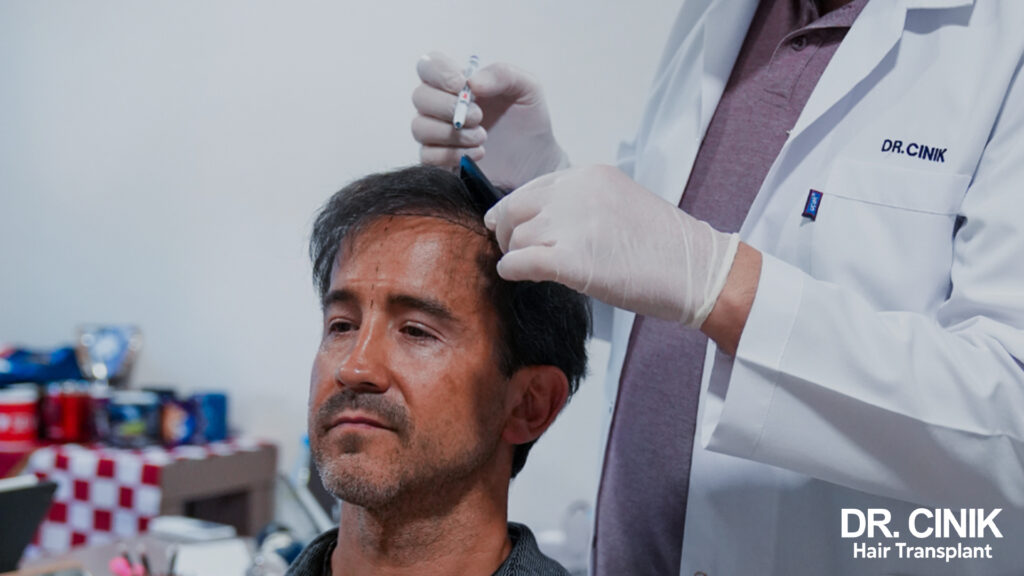Hair Transplantation For A Receding Hairline

Sommaire
Many people experience a receding hairline due to stress, certain medications, or an illness, in which case it’s only temporary. But in most cases, genes are the main culprit for losing hair in that area of the scalp.
If your genes are to blame for your receded hairline, you’re likely considering a cosmetic procedure. Here’s everything you need to know about hair transplantation for a receding hairline.
What Are The Methods Of Hair Transplantation For A Receding Hairline?
There are two methods of hair transplantation for a receding hairline:
Follicular unit extraction (FUE) is mostly used for this particular hair loss problem, although the DHI method also works well.
They are quite similar procedures that involve harvesting your existing hair to transplant it to the hairline area. They include moving hairs from areas of the scalp that are not affected by male pattern baldness to the thinning or bald part of the scalp.
They mainly differ in the way hair follicles are inserted into the recipient area. They also differ in the surgical tools used to harvest the donor’s hair and implant it into the area where a hairline is receding.
The harvested area looks like it did before the surgery once the hair grows back. So, there’s absolutely no reason to worry about your surgeon trimming it to harvest hair grafts.
Both methods of hair transplantation for a receding hairline are minimally-invasive and leave no scars. The scars from tiny incisions are only visible for a short period after the surgery, as they heal very quickly.
How Is A Hair Transplantation For A Receding Hairline Performed?
Here’s how the procedure works for each of these two methods.
FUE Method
The FUE hair transplant involves using an automatic micromotor tool to extract follicular units from a donor area. A hair transplant surgeon either extracts them one by one or in groups of 2, 3, or 4.
The surgeon then puts the grafts into a special liquid containing ATP (adenosine triphosphate) to preserve them until they’re ready for transplantation.
The next step is opening micro-channels in the recipient area using the same surgical tool. The harvested hair grafts are then inserted into those channels.
The number of grafts needed depends on your receded hairline, but a rough estimate is somewhere between 1,200-2,000 grafts.
The procedure can take between 4-8 hours, depending on the number of grafts.
DHI Method
The DHI method is performed almost the same. After the surgeon harvests hair grafts and preserves them into a special solution, they use an implanter pen called Choi pen to implant follicular units into the balding area directly.
There’s no need to open the micro-channels separately before inserting the hair because the implanter pen does both simultaneously.
This requires higher precision but ensures a shorter recovery time.
The DHI method can also take up to 8 hours, depending on the number of follicular units being transplanted. In the case of restoring receded hairlines, it usually takes fewer hours.
When it comes to either of these procedures, you can return to work after approximately three days.
However, be careful with the transplanted grafts during the first two weeks, especially the first ten days, when they’re taking root. Wear a protective hat or cap when going outside to protect the grafts and ensure the best possible results.
Hair Transplantation For A Receding Hairline With Dr. Emrah Cinik
Dr. Emrah Cinik Hair Hospital is one of the most renowned hair clinics in Turkey. Based in Istanbul, it’s a clinic where you can get top-quality hair transplantation for a receding hairline as a natural and permanent solution with optimal results.
Dr. Emrah Cinik is an expert in both FUE and DHI hair transplants, having carried out more than 10,000 successful operations to date.
One of the side effects of any method of hair transplantation is the so-called shock loss, which means losing some of your hair within 2-3 weeks after the surgery.
That’s entirely normal and only temporary. That’s just your natural hair pushing out the transplanted hair, so there’s no reason to worry. After 6-9 months following the surgery, you’ll notice visible, natural hair growth.
In about a year after the procedure, you will have a full head of hair. You will be able to say goodbye to a receded hairline forever.
If you have any further questions or would like to schedule a procedure, contact Dr. Emrah Cinik Hair Hospital today for a free online consultation.
 en
en



